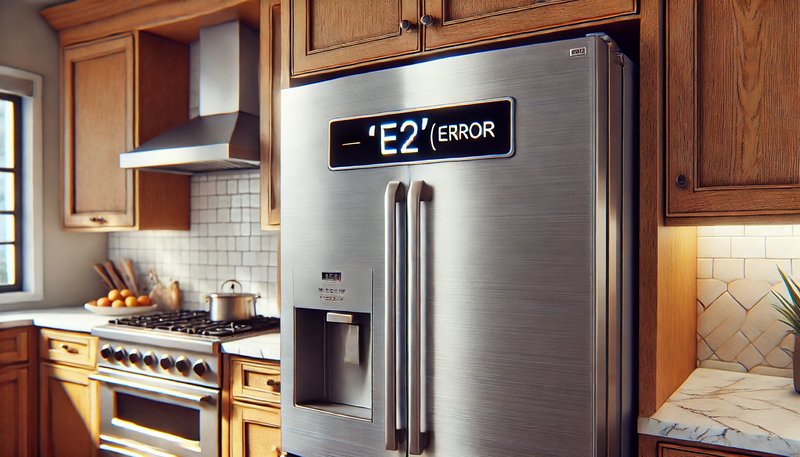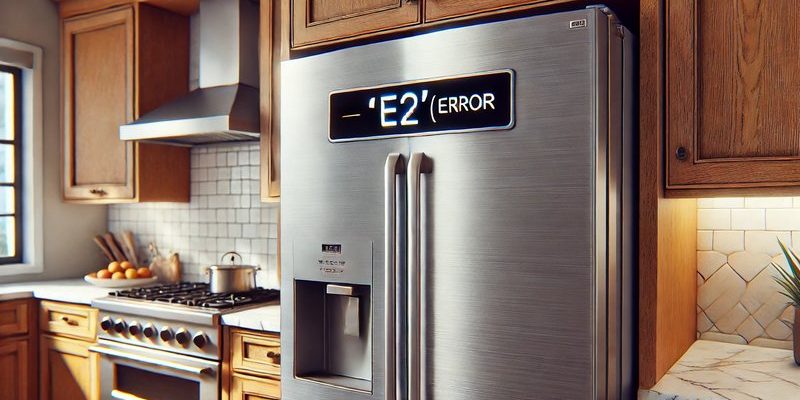
This article is here to demystify what that pesky F2 code means when it pops up on your GE refrigerator’s display. Trust me, you’re not alone in feeling a bit bewildered by this. Error codes can feel like a foreign language at times. But think of it like your fridge trying to send you an SOS. It’s saying, “Hey, something’s not quite right in here!” Let’s explore what that something might be, why it happens, and when it’s time to bring in professional help.
Understanding What Error Code F2 Means
First things first, let’s crack the code. An error code like F2 isn’t just a random collection of letters and numbers. In the world of GE refrigerators, an F2 error typically points towards a problem with the refrigerator’s evaporator fan. Think of the evaporator fan as the refrigerator’s air circulator. It’s what keeps the cold air moving around inside the fridge and freezer, ensuring everything stays at just the right chilly temperature.
When the F2 error code appears, it’s often because something is up with this fan. Maybe it’s failed entirely, it’s running slower than it should, or something is blocking its path. Imagine trying to run a marathon with a headwind. That’s what your fridge feels like right now—trying to do its job while something is holding it back. This, in turn, can cause your fridge to lose its coolness, both literally and figuratively!
Here’s the deal: without the evaporator fan working properly, your fridge can’t maintain the right temperature. This could mean your food might spoil faster, or your ice cream could turn into a melty mess. It’s not just a minor inconvenience; it could potentially lead to wasted food and extra costs down the line. So it’s essential to pay attention to an F2 error code and take action sooner rather than later.
Common Causes of the F2 Error
Let’s dive into why your GE refrigerator might be flashing that F2 code at you. One common cause for an F2 error is a faulty motor in the evaporator fan itself. If the motor’s giving up the ghost, the fan can’t spin like it should, and that’s when the trouble begins. It’s like trying to drive a car with a failing engine—you won’t get very far.
Another potential culprit could be obstructions. Yes, something as simple as a misplaced item in your freezer or a buildup of ice can block the fan blades, causing the F2 error. Picture this: you’re trying to cool off on a hot day with a fan, but someone keeps waving their hand in front of it. Frustrating, isn’t it? Your fridge feels the same way when the fan is blocked.
Then there are electrical issues. Bad wiring or a fault in the circuit board could be behind the F2 code. This is akin to a string of Christmas lights where one faulty bulb messes up the whole display. Sometimes, the refrigerator’s own wiring might be the issue, and that’s a bit trickier to handle on your own.
When to Call a Technician
You might be wondering, “Can I fix this myself?” Well, if you’re feeling handy and the problem seems like a simple obstruction, you could try clearing anything that’s blocking the fan. But for anything more complex, like a fan motor replacement or electrical repairs, calling a professional is your best bet. Why? Because poking around inside a refrigerator without the right know-how can lead to further damage or even safety hazards.
When it comes to an appliance as crucial as your fridge, it’s often better to err on the side of caution. A certified technician will have the expertise to diagnose the problem accurately and the tools to fix it safely. Plus, they can ensure everything is running efficiently, potentially saving you money on energy bills in the long run and extending the life of your fridge.
And don’t sweat it—it’s perfectly normal to call for help. Just like you wouldn’t attempt to fix your car’s engine without mechanical skills, it’s wise to leave refrigerator repairs to the experts when you’re unsure. So if the F2 code stubbornly persists after you’ve tried the basics, it’s time to reach out to a professional.
Preventative Tips to Avoid Future Issues
Now that you’re armed with knowledge about the F2 error, let’s look at how you can prevent it happening again. Regular maintenance can keep your fridge running smoothly and help you avoid the headache of more error codes.
Start by ensuring that you clean your refrigerator regularly. You’d be surprised at how much of a difference a simple cleaning can make. Focus on the freezer as well, ensuring that it’s free of frost buildup and that items aren’t packed so tightly that they obstruct the fan.
Another tip is to check your refrigerator’s seals. Those rubber gaskets around the doors are crucial for maintaining the internal temperature. If they’re cracked or dirty, cold air could escape, making your fridge work overtime and straining the evaporator fan.
Finally, consider scheduling a regular maintenance check with an appliance professional. Think of it like an annual doctor’s visit for your fridge. They can spot issues before they become problems, keeping your appliance in top shape and avoiding unexpected surprises like the F2 error.
In conclusion, understanding what an F2 error code means, why it happens, and when to call a technician can make all the difference. It’s not just about fixing a problem; it’s about keeping your refrigerator—an essential part of your home—working efficiently for years to come. So the next time you see F2, you’ll know exactly what to do.
